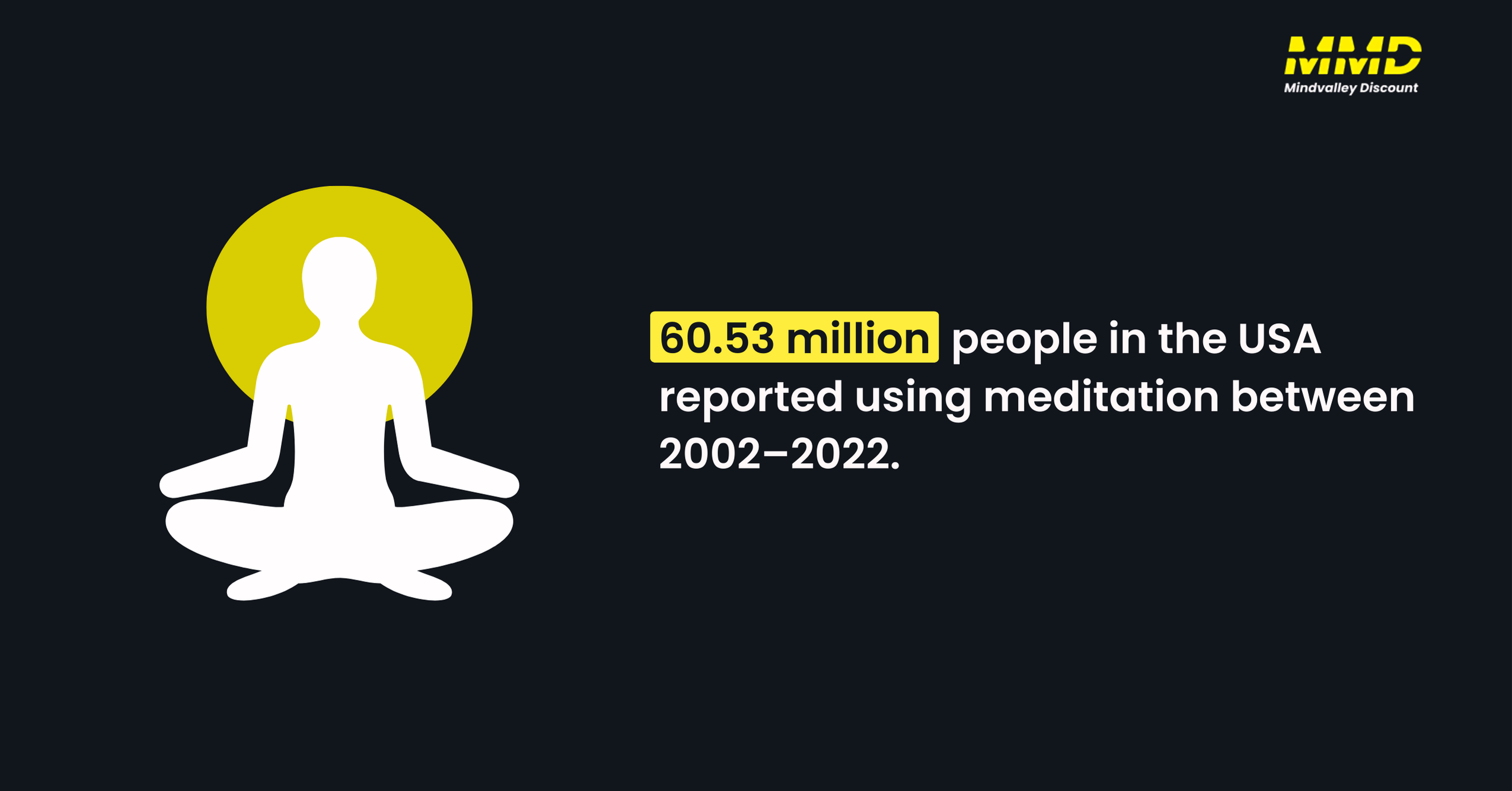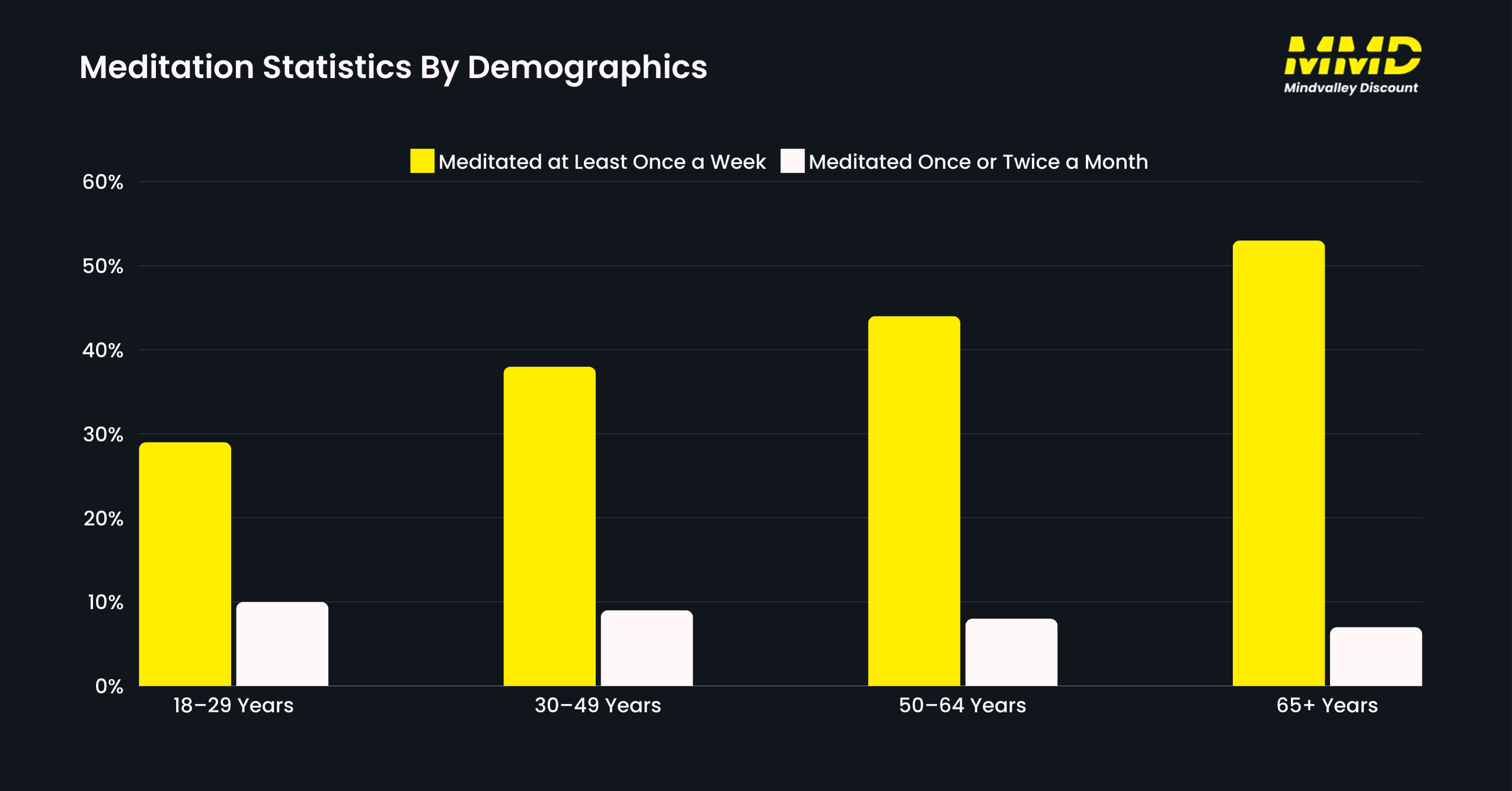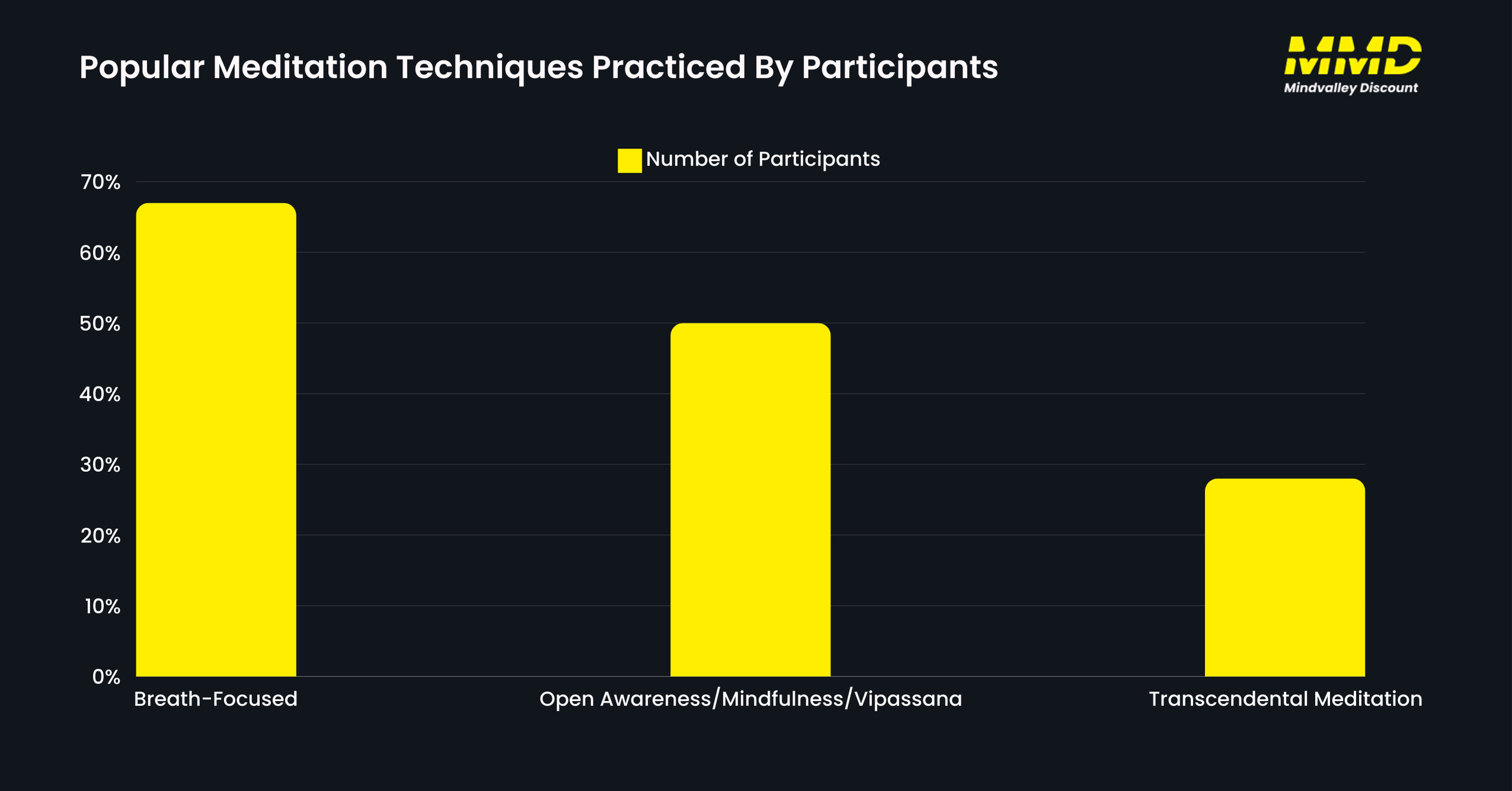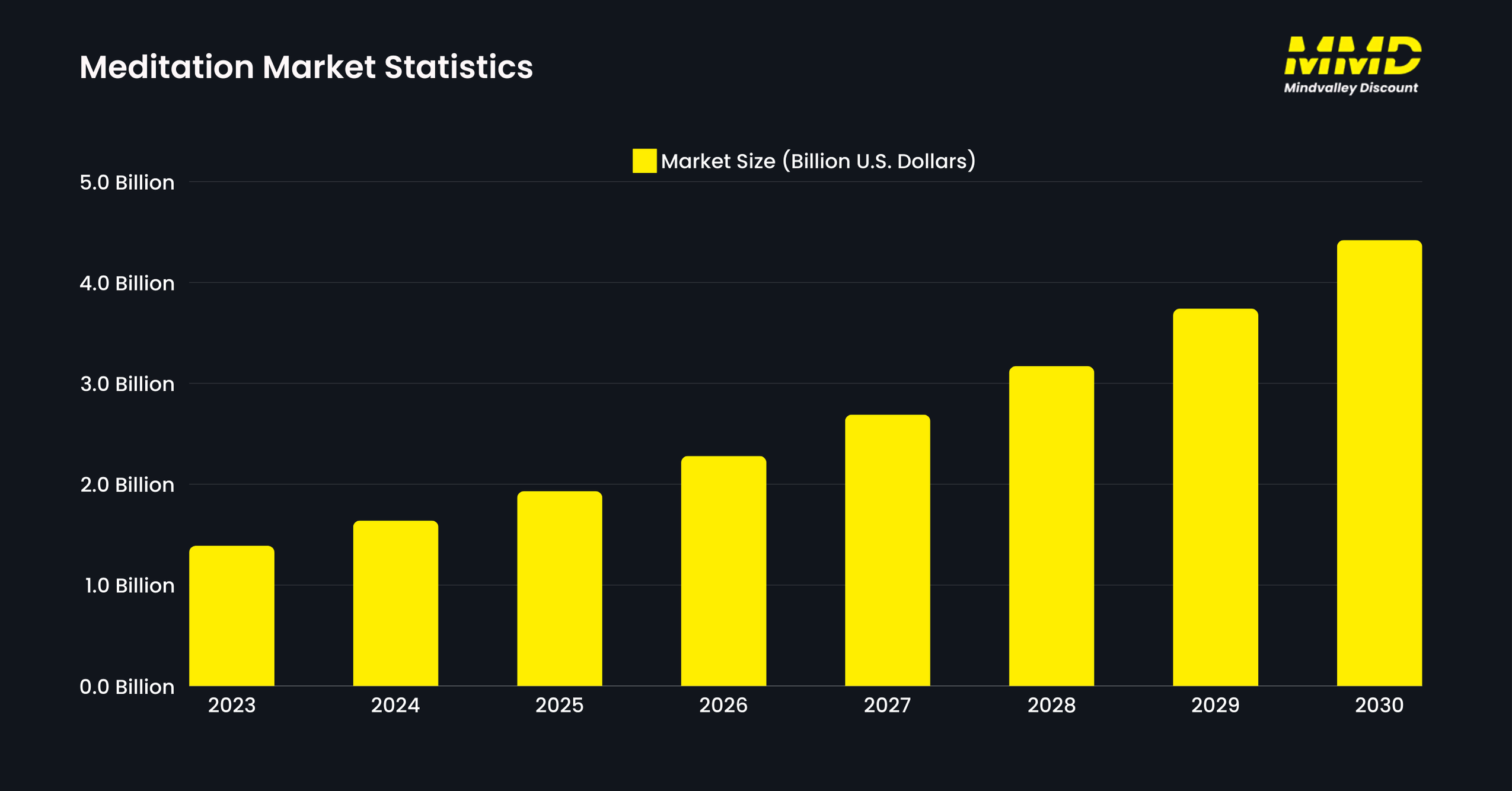In 2025, over 275 million people practice meditation globally, with India (80.7 million), the United States (37.9 million), and China (12.2 million) leading the way.
Meditation reduces depression relapse by 12%, enhances theta and alpha brain waves, and improves clarity and well-being. In the U.S., the use of meditation grew from 4.1% (2012) to 14.2% (2017), with 53% of adults aged 65 and older meditating weekly.
The global meditation app market hit $1.39 billion in 2023, led by Calm ($7.7M). Ireland tops Google searches for meditation. This data reveals how meditation is not just a trend, but a rapidly growing mental health and wellness tool worldwide.
So, without any further ado, let us get started!
Top Picks: Meditation Statistics
- 275 million people practice meditation in the world
India has the highest number of meditators, with 80.7 million, followed by the United States (37.9 million) and China (12.2 million). (Source- Mindfulness Box) - Meditation has been shown to reduce relapse of depression by 12%. (Source- Science Direct)
- While meditating, two essential types of brain waves—theta (4–7.5 Hz) and alpha (8–13 Hz)—increase, which is linked to greater awareness and relaxation.
As people meditate, they shift into a state that combines relaxation with heightened mental clarity, making it a powerful practice for improving overall well-being.
(Science Direct)
- The global revenues of mobile meditation and mental wellness apps amounted to approximately $1.39 billion in 2023. (Source- Statista)
- The leading meditation apps by revenue were Calm, generating approximately $7.7 million, followed by Headspace, with around $4 million, and Sleep Cycle at nearly $1.4 million. (Source- Statista)
Meditation Statistics By Country
- 60.53 million people in the USA reported using meditation between 2002 and 2022. (Source- Nature)

- The 2017 National Health Interview Survey in the United States surveyed 26,742 people and found that 14.2% of American adults meditate. (Source- NCCIH)
- A 2020 survey of 1,013 adults in Britain reported that 15% meditate. (Sage Journal)
- The latest 2018 survey of 2,126 adults in Germany found that 15.1% of the German population practices meditation. (Karger)
- During the pandemic, 26.3% of people in Canada reported practicing meditation. (Statistics Canada)
- In a 2021 study conducted in India, 17.8% practiced meditation, while 20.5% engaged in yoga and meditation, resulting in 38.3% practicing at least one of these activities. (JFMPC)
- Ireland has the most search volume on Google for “mediation.”
The top 10 countries that have looked up meditation on Google as per their ranks are:
1. Ireland
2. Australia
3. Canada
4. Switzerland
5. New Zealand
6. United Kingdom
7. United States
8. Austria
9. Nepal
10. Denmark
(Source- Google Trends)
Meditation Statistics By Demographics
- In the USA, 53% of those aged 65 and older practice meditation, whereas only 29% of individuals aged 18–29 meditate weekly.

The frequency of meditation practices in the United States by age group is as follows:
| Age Group | Meditated At Least Once A Week | Meditated Once Or Twice A Month |
|---|---|---|
| 18–29 | 29% | 10% |
| 30–49 | 38% | 9% |
| 50–64 | 44% | 8% |
| 65+ | 53% | 7% |
(Source- Pew Research)
- The use of meditation in the United States has seen a remarkable increase, rising from 4.1% in 2012 to 14.2% in 2017, reflecting a more than threefold growth.
Women are notably more likely to meditate than men, with 16.3% of women practicing meditation versus 11.8% of men.
The use of meditation varies significantly among different racial and ethnic groups. Non-Hispanic White adults have a higher meditation rate, at 15.2%, followed closely by non-Hispanic Black adults, at 13.5%. In contrast, Hispanic adults report a lower meditation rate, at 10.9%.
(Source- Centers for Disease Control and Prevention)
- Among parents, 28% meditate at least once a week, significantly lower than the 72% of non-parents who engage in weekly meditation.
(Source- NCBI)
If you are a student looking to develop a meditation practice, join Mindvalley today with a student discount!
Statistics On Meditation And Mental Health
- In a 2019 study, 96% of students reported experiencing maximum or high levels of relaxation after three months of meditation, whereas 64% reported either minimal or no tension. (Source- The International Journal of Indian Psychology)
- Active meditators maintained lower anxiety scores at both 6 and 12 months and lower depression scores even after 6 months. (Source- Science Direct)
- In a study of 1,856 participants from 66 countries, 25% of participants reported being formally diagnosed with a psychological disorder, with depression (19%) and anxiety (14%) being the most prevalent.
- 91% of people who tried meditation reported feeling like they were in a different world and liked the experience.

The most popular meditation techniques practiced by these participants were:
| Type Of Meditation Practice | Number Of Participants |
|---|---|
| Breath-Focused | 67% |
| Open Awareness/Mindfulness/Vipassana | 50% |
| Transcendental Meditation | 28% |
(Source- Europe PMC)
You, too, can start your journey of healing with meditation. Get Mindvalley free trial here.
Meditation Practices As Part Of Yoga
- Recent data from a study conducted in 2022 in the USA indicates that a higher percentage of women (59.3%) engage in meditation as part of their yoga practice than men (52.9%).
The prevalence of meditation in yoga practices declines with increasing age.
Specifically, 62.0% of adults aged 18–44 practice meditation as part of yoga, while this figure drops to 49.1% among those aged 65 and older.
When examining racial demographics, Asian (56.7%) and White (54.0%) adults are less likely to incorporate meditation into their yoga routines than individuals identifying as other or multiple races (70.8%), Black (70.7%), and Hispanic (66.8%).
Income levels also appear to influence meditation practices among adults.
Those with family incomes below 200% of the Federal Poverty Level (FPL) demonstrate a higher engagement rate in meditation as part of yoga at 65.3%, compared to 56.7% for those with incomes between 200% and less than 400% FPL, and 55.7% for individuals with incomes at or above 400% FPL.
(Source- NCBI)
Meditation Market Statistics
- In the U.S., meditation apps account for 4.9% of all health app downloads. (Source- Statista)
- In 2023, global revenues for mobile meditation and mental wellness apps reached approximately $1.4 billion. This market is projected to exceed $7.25 billion by 2033.

Here’s a table summarizing the mobile meditation app market size worldwide from 2023 to 2030:
| Year | Market Size (Billion U.S. Dollars) |
|---|---|
| 2023 | 1.39 |
| 2024 | 1.64 |
| 2025 | 1.93 |
| 2026 | 2.28 |
| 2027 | 2.69 |
| 2028 | 3.17 |
| 2029 | 3.74 |
| 2030 | 4.42 |
(Source- Statista)
- The top mediation app was “Calm,” with in-app revenues of approximately 7.7 million U.S. dollars.
Here’s a table for the top 10 leading health and meditation apps worldwide:
| Sr. No. | App Name | Revenue (Millions U.S. Dollars) |
|---|---|---|
| 1 | Calm | 7.68 |
| 2 | Headspace: Sleep & Meditation | 4.02 |
| 3 | Sleep Cycle – Sleep Tracker | 1.36 |
| 4 | BetterSleep: Relax and Sleep | 1.22 |
| 5 | Waking Up: Meditation & Wisdom | 1.20 |
| 6 | Insight Timer–Meditate & Sleep | 1.11 |
| 7 | Balance: Meditation & Sleep | 0.96 |
| 8 | Ten Percent Happier Meditation | 0.65 |
| 9 | Gaia: Streaming Consciousness | 0.57 |
| 10 | SleepWatch – Top Sleep Tracker | 0.53 |
(Source- Statista)
